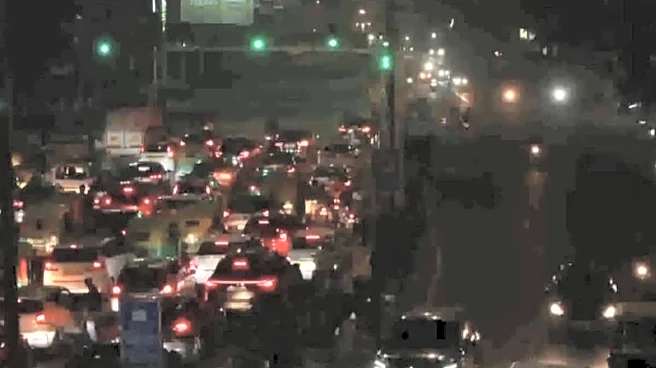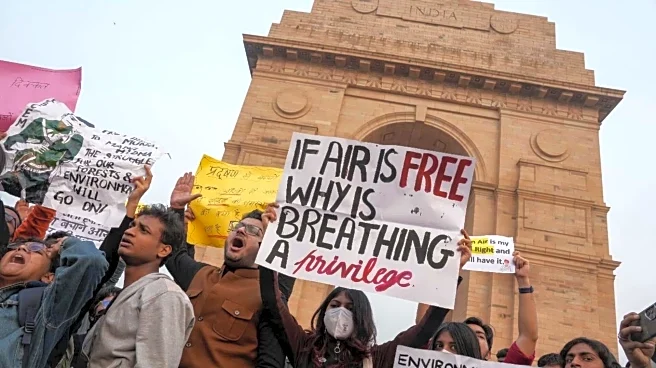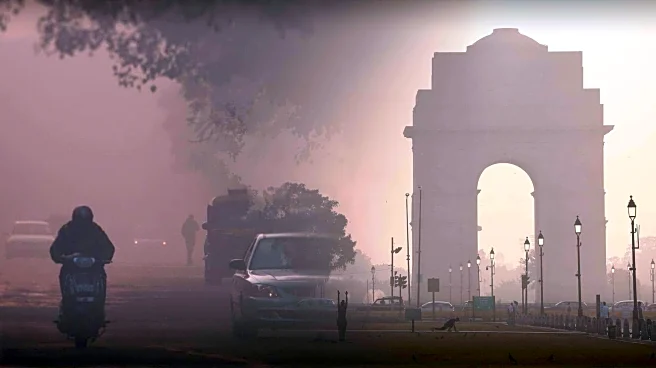Delhi’s air quality hovered dangerously close to the ‘severe’ category on Monday, with the city’s overall AQI at 397, slightly higher than the previous day. On Sunday, the city’s air quality remained in the ‘very
poor’ category with a 24-hour average AQI of 391.
Data from 39 monitoring stations showed that more than half, 20 locations, recorded pollution levels in the ‘severe’ bracket. Conditions were even worse in Noida, where the AQI hit 413. According to the Air Quality Early Warning System, Delhi’s air quality is likely to be in the ‘very poor’ category till Wednesday.
#WATCH | Delhi: Drone visuals around Mayur Vihar and surrounding areas as a layer of toxic smog blankets the city.
AQI (Air Quality Index) in the area is 441, categorised as ‘Severe’, as claimed by CPCB (Central Pollution Control Board).
(Visuals shot around 6.50 am) pic.twitter.com/YL9DpxKFI2
— ANI (@ANI) November 24, 2025
Several Delhi neighbourhoods turned into pollution hotspots early in the morning. At 7 am, Jahangirpuri reported a staggering 455, while Rohini (458), DTU (444), Anand Vihar (442), Bawana (439), Ashok Vihar (436), Burari (433), Alipur (412), ITO (409), and Dwarka (401) also recorded severe pollution, reflecting hazardous air across much of the capital.
VIDEO | Delhi: Morning visuals from Akshardham show a thick layer of haze hanging over the area, with the temple mound structure only faintly visible in the background.
As per CPCB data, the AQI here has surpassed the 400 mark, placing the air in the ‘severe’ category.… pic.twitter.com/Ad1gyrTVZZ
— Press Trust of India (@PTI_News) November 24, 2025
The weather department has predicted moderate fog for today, with maximum and minimum temperatures expected to be 25 and 10 degrees Celsius, respectively.
Toxic Air Across NCR
Across NCR, the picture was hardly better. Ghaziabad, with an AQI of 432, continued to grapple with extremely polluted air, while Greater Noida (399) fell in the ‘very poor’ range but was only a point away from tipping over. Gurugram (291) and Faridabad (239) offered some relief, though both remained in the ‘poor’ category.
An AQI between 0 and 50 is considered ‘good’, 51 to 100 ‘satisfactory’, 101 to 200 ‘moderate’, 201 to 300 ‘poor’, 301 to 400 ‘very poor’, and 401 to 500 ‘severe’, according to the CPCB.
Overall, Delhi-NCR saw a decline in air quality compared to Sunday.
Amid worsening conditions, a youth-led demonstration unfolded at India Gate on Sunday, demanding stronger action on pollution. Tensions escalated when protestors refused to disperse despite police instructions. Authorities claimed that some participants used chilli spray during the scuffle.
The protest was organised by the Delhi Coordination Committee for Clean Air, which warned that the capital’s pollution crisis poses a “serious risk” to residents. The group accused government agencies of neglecting long-term solutions and relying instead on short-term efforts such as water sprinkling, cloud seeding, and targeted spraying near AQI stations.












